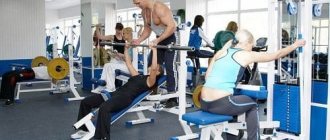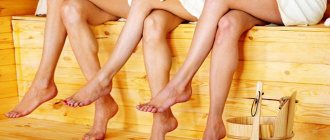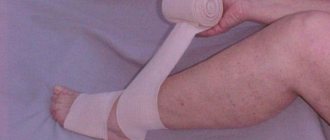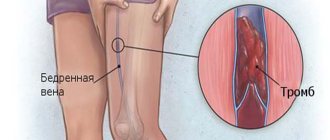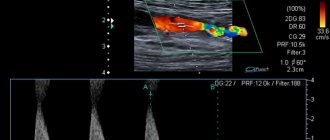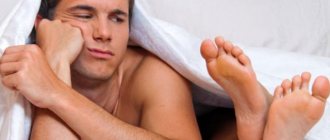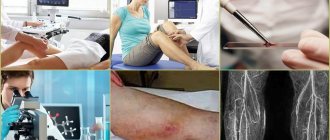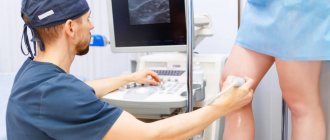Hello guys, everyone.
Varicose veins are a serious disease. It is necessary to take into account the opinion of the attending physician and his advice before starting training. Running with varicose veins - is it possible to exercise with varicose veins, what are the limitations that must be taken into account.
Varicose veins occur due to impaired blood flow. Congestive processes arise as a result of dysfunction of the venous valves, which are responsible for regulating blood movement. Excessive pressure on the veins leads to tension, weakening and deformation. As a result, blood vessels appear under the skin, and the tissues lack oxygen and nutrients.
Varicose veins develop under the influence of a number of factors, which include:
- Heredity. Genetics determines the weakness of the vein wall, which over time leads to stretching. If a grandmother or mother suffers from varicose veins, the risk of developing pathology is up to 70%.
- Sedentary work.
- Overweight. Body weight causes enormous stress on the limbs and cardiovascular system.
- Hormonal disorders.
- Excessive loads. Overuse of energy exercises can lead to stretching of the venous wall and gradual atrophy of the venous valves.
- Smoking and drinking alcohol.
- Stress.
- Do not wear tight-fitting clothes or high-heeled shoes.
The benefits of running exercises
The positive effect of running can be achieved:
- an easy running pace relieves congestion in the veins;
- long driving and long distances - the risk of venous thrombosis;
- complete the lesson by relaxing the leg muscles (lie on your back and raise your legs high above your head, do the birch exercise).
To achieve the effect, it is better to combine running with other types of exercises. For varicose veins, leg swings and stretching are especially helpful.
ATTENTION ! It is important to remember that weightlifting is not recommended for varicose veins. The use of strength training in the gym should be avoided. The ban also applies to all leg sports, such as martial arts or aerobics.
An important point in the treatment of vein diseases is the correct technique. If you have low blood pressure, lowering your heels can reduce the symptoms of the disease.
This is due to the fact that when stepping on the heels, a person makes a full range of motion of the calf muscles, which resembles the movement of a pump.
It is impossible to achieve full amplitude when walking in heels, so it is contraindicated for varicose veins.
Indications for jogging with varicose veins
With varicose veins in the legs (subcutaneous veins), the veins dilate and gradually collapse. The blood in them does not move, but stagnates. However, since the main outflow occurs through the deep veins (more than 70%), there is usually some blood still circulating. Inconvenience does not arise until venous congestion leads to complete destruction of the veins and disruption of the structure of the tissue surrounding them.
Running for patients with this disease is the correct procedure. Active work of the calf muscles (the back of the lower limb) simplifies and accelerates the movement of blood in the venous system of the lower limbs. This reduces the load on the superficial veins and slows the progression of venous insufficiency.
People with mild forms of varicose veins in the legs should run. This category includes stages 1 and 2, which have no other special contraindications. The characteristics of the disease are as follows:
- Mild swelling of the legs in the evening, after rest and sleep.
- The appearance of an improved vascular line on the skin in the form of a mesh or spider.
- Enlarged, coiled saphenous veins (single or multiple), in the form of huge nodes.
- The skin around the veins has a light brownish-blue color in the form of spots, and has no wounds.
- Pain after exercise.
- An operation was performed to remove the vein, but a relapse occurred in the form of a slight dilation of the vein.
Who shouldn't run?
There are a number of contraindications for running with varicose veins. These include:
- last stages of the disease;
- severe pain and cramps in the legs;
- visible, obvious changes in the venous trunks;
- failure of the valve apparatus of blood vessels;
- presence of blood clots;
Running can provoke the detachment of a blood clot, if present, which will lead to blockage of individual vessels, disruption of tissue nutrition, and then necrosis. Also most dangerous is a blood clot entering the lungs, which is a common cause of sudden death in patients with varicose veins).
- inflammatory processes in the venous walls;
Concomitant inflammation of the blood vessels of the lower extremities also cannot be combined with running. An exacerbation of the disease and aggravation of the condition is possible. If the valves are damaged, blood reflux and even more complete blood filling may occur. The result will be unbearable pain, as well as severe swelling of the legs.
- general serious condition of the patient.
Thus, in order for jogging to be enjoyable and beneficial, it should be carried out under the control of your health. Loads should be increased gradually, and you should only start exercises in a good mood. Of course, then the result is guaranteed.
Contraindications to running with varicose veins
In some cases, such actions may cause more harm than good. These include:
- accompanying illnesses,
- overweight,
- unwise approach.
Accompanying illnesses
First of all, it is worth mentioning thrombophlebitis. If varicose veins reach the stage where the veins become inflamed and blood clots form, running is strictly contraindicated. This can cause blood clots to separate, which can clog blood vessels or the brain.
In addition, some diseases of the spine and joints eliminate the load.
Excess weight
Excess weight in itself is not healthy. When running, increased demands are placed on the legs, which is completely unnecessary. It's also bad for the spine.
Unwise approach
Long distances or high speeds are very harmful due to the heavy load on the feet and can lead to the development of thrombophlebitis.
Another sign of a wrong attitude is the choice of clothes and shoes. Tight underwear means poor blood circulation and the clearance for veins is not too large.
Wearing the wrong shoes can also cause excessive strain or impair blood flow. It can also damage your joints and spine. It follows that running on the heels of a bus can in no way be considered recovery.
How to make your workouts safe
Varicose veins require certain measures:
- The work must be constant and systematic.
- The load should gradually increase. You can change the distance by increasing your running speed.
- The speed of movement is reasonable, sprinting is excluded.
- For training, you should not choose terrain with gradients and descents. You should refrain from running or jumping over obstacles.
- Stretching, "birch", horizontal, "scissors", "bicycle" and other exercises in which blood flows from the lower extremities can be a good end to the lesson.
- A contrast or cold shower will further strengthen the blood vessels.
After an hour, you can also apply the ointment prescribed by the doctor and put on special compression clothing for regeneration.
How do our veins work?
The heart is the “engine” of the circulatory system. Blood reaches tissues through arteries and returns to the heart through veins. Arteries distribute oxygenated blood, veins ensure its further return to the heart.
- There are deep and superficial veins in the human lower extremities
- 9/10 of venous blood volumes rise to the heart via deep veins
- Superficial veins deliver only 1/10 of venous blood to the heart and are located shallowly under the skin.
- The superficial veins consist of 2 main veins: the great and small saphenous vein.
Superficial and deep veins are equipped with special valves. They close when the muscles relax, preventing blood from flowing back. There are several such valves in the veins.
Choosing running shoes
The main requirement for choosing shoes is that they should be loose and not interfere with proper blood circulation in the legs.
Exercises are best performed in special sneakers with shock-absorbing soles.
Consider the following criteria to make the right choice and not harm your health:
- Make sure your running shoes have adequate cushioning. If there are any deviations, contact the staff at a specialist store to assess the level of wear and see whether the shoes meet your needs or not;
- shoes made from natural materials provide free air exchange and prevent blood stagnation;
- the load on the legs and feet should be evenly distributed;
- When choosing shoes, the main thing is comfort. Running shoes that pinch your toes, are stiff, and are inflexible are a poor choice.
Tips for Running Safely
To get the most out of running, you should follow the recommendations of experts. Experienced phlebologists advise:
- Exercise regularly. Systematicity is the key to success. You can develop an individual schedule - daily light jogging over a certain distance, classes every other day, or 2-3 workouts per week.
- Avoid hard surfaces, particularly asphalt, concrete or paving slabs. For running with varicose veins, tracks at a stadium or gym, grass, and paths in the park are ideal.
- Drink enough fluids to prevent blood viscosity, which puts stress on the cardiovascular system.
- Take a contrast shower - alternate between warm and cool water.
The training time and intensity are determined individually by your trainer. In order for the body to react as expected to increased loads, you need to stick to your training plan and use a sports watch to track your body’s performance.
Selection of linen
Wear special underwear for exercise. Wearing it while running will help reduce pulsation, lethargy, and leg problems. Phlebologists recommend this underwear for the treatment and prevention of foot diseases.
To reduce the load, you should wear compression clothing throughout the entire session.
This is necessary to:
- help the muscles push blood to the front of the heart;
- prevent thrombosis;
- increased lumen of the saphenous vein, ankle joint and the work of peripheral veins returns to normal;
- the operation of the valve device is in moderate condition;
- tissue nutrition improves.
There are four types of tissue for varicose veins:
- Elastic bandages.
- Tights.
- Compression stockings.
- Compression socks.
Elastic bandages were widely used even before the use of proper underwear. Less often, but they continue to use this method now. This is due to the low cost. When used correctly they are truly effective.
However, it should be remembered that the positive effect will be if you really know how to apply them, how to distribute the pressure, which takes time. It should be noted that the dressings are fragile, which leads to doubts about the effectiveness of the method. There are also disadvantages.
For running or walking to be beneficial, exercise must be done regularly.
The development of modern products takes into account anatomical properties and correctly distributes pressure: high in the lower part of the leg and 40% in the upper part. Underwear will help you comply with all standards much better.
- As for stockings, they are more suitable for leg exercises.
The first level is intended to prevent the disease and is recommended:
- for people prone to varicose veins;
- if your legs start to hurt after sitting for a long time;
- at the end of the day signs of swelling are visible;
- spider veins are visible;
- veins under the skin are noticeably dilated.
The second level can be used for treatment.
Such underwear should be purchased only in special stores. The consultant will take all the necessary measurements and help determine the size. This is especially important because the wrong size will make the treatment ineffective or even harmful to health. If this is your first purchase, you should start with 1 - this is a good choice. However, if varicose veins are clearly visible, you should consult your doctor.
For most patients, experts recommend running in compression underwear; it slightly strains the legs.
Most people note that it is difficult to give up underwear: it makes your legs feel light. However, it is less important to consider that compression garments are only useful for 5 to 7 months.
If, after checking your health, your doctor allows you to play sports using special underwear, you should understand that there are also several contraindications:
- diabetes;
- inflammatory and/or allergic skin diseases;
- cardiopulmonary failure;
- open wounds.
Life after surgery
As you know, varicose veins often require surgical intervention. Depending on how the operation was performed, the postoperative period may last several weeks. If a person wants to continue running, it is important to consult a doctor about this.
Even if doctors previously prohibited running due to the degree of varicose veins, after the operation the degree is significantly reduced and doctors allow physical activity. It is important that even in such cases, recommendations are aimed at a specific patient.
In most cases, the quality of life after surgery is significantly improved, so running is allowed in almost all cases. The only exceptions are cases with concomitant pathologies.
How to replace running with varicose veins
Running is beneficial and helps strengthen the muscles and veins of the legs. However, in practice it is not always easy to find a threshold beyond which the condition may worsen. In this regard, phlebologists often advise walking. Evening walks in the fresh air are especially good. During walking and running, the activity of the muscle pump is stimulated.
Light jogging can be combined or replaced with other aerobic sports. This could be good aerobics, an exercise bike or cycling. A good choice is to visit the pool. No need to swim.
You can stand in the water to reduce venous strain. It's great if you have the opportunity to do water aerobics, the movements in which are absolutely safe.
Currently, there are other areas that treat varicose veins. For example, Pilates is not prohibited. In yoga, you should choose a set of exercises without strong muscle tension. You can choose tango, salsa, oriental, Latin dances.
It is worth considering that the condition of the veins can be aggravated by jumping and stepping.
Walking as an alternative to running
This is a sport that is close to running, but it has few contraindications. Walking doesn't mean going fast, it's about regulating your pace correctly.
Recently, Nordic walking with poles began to be practiced. During these exercises, all muscles are used, which is beneficial for overall health.
